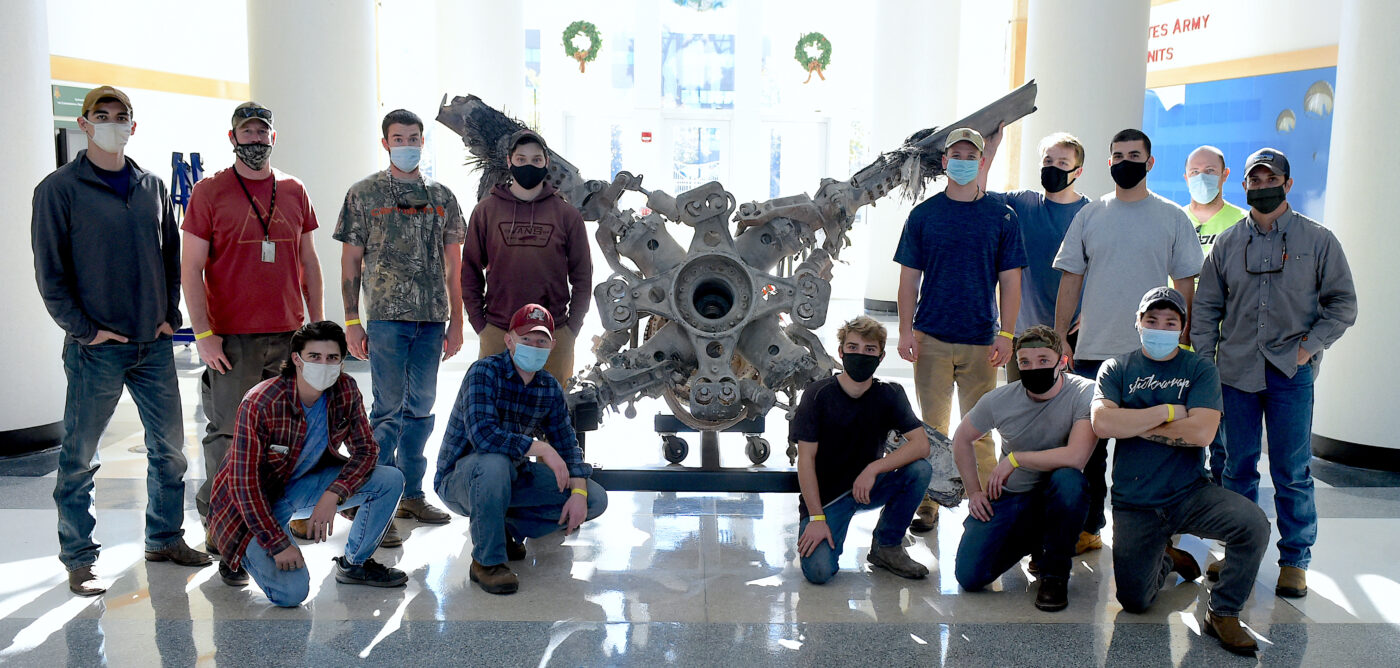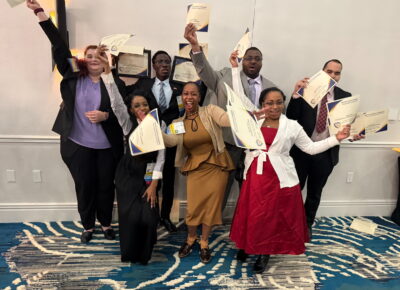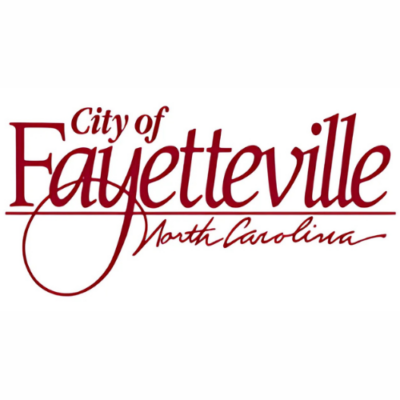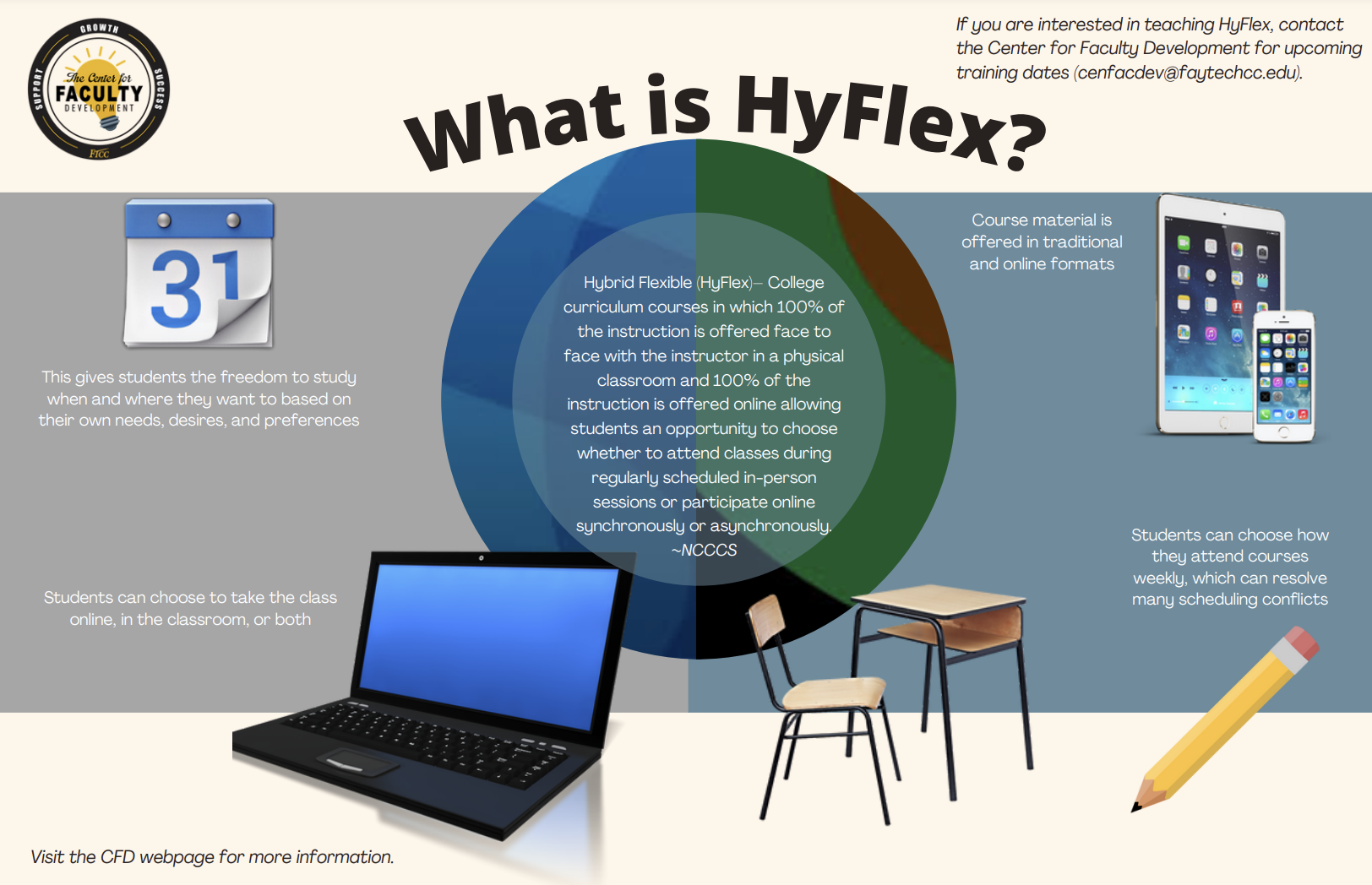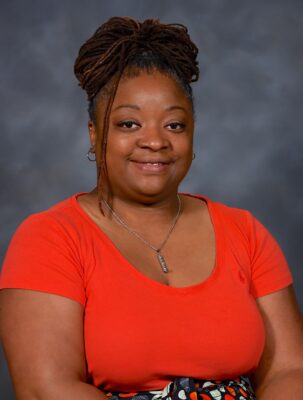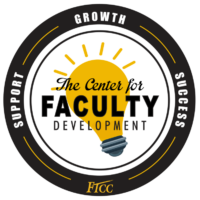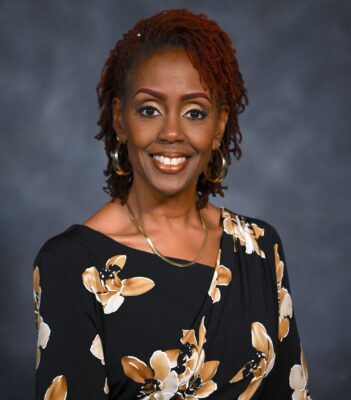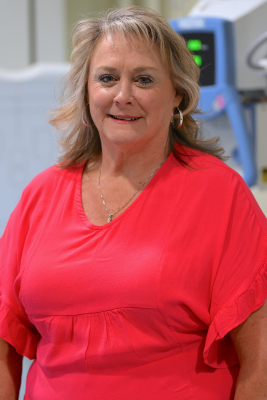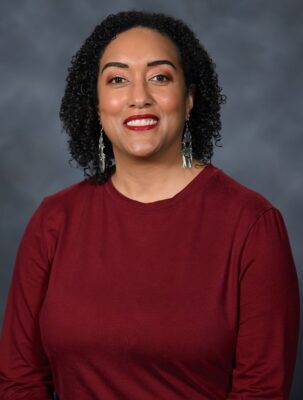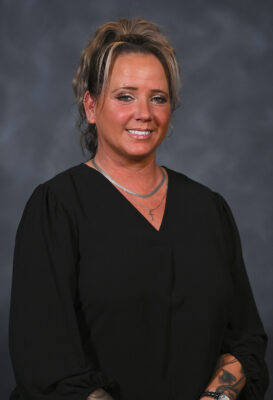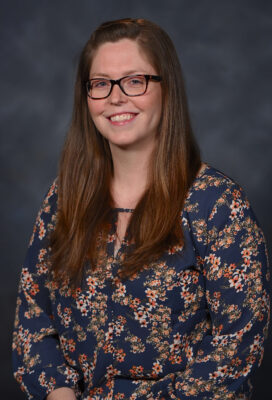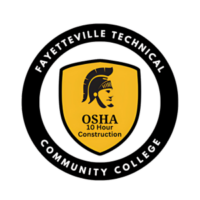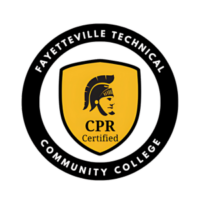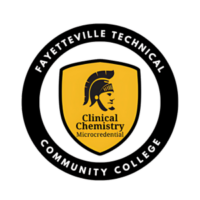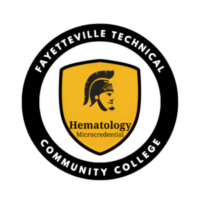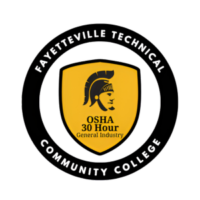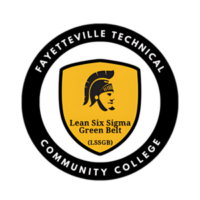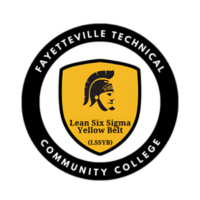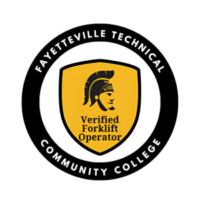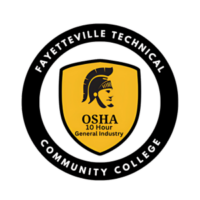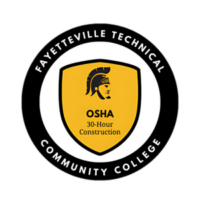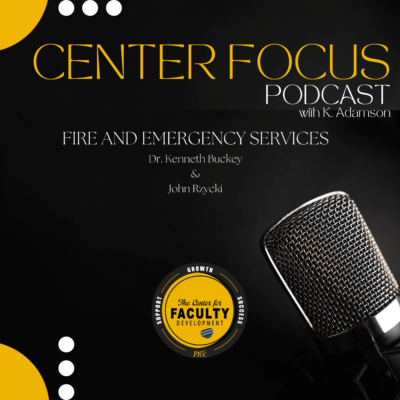FTCC students finish project for Battle of Mogadishu exhibit
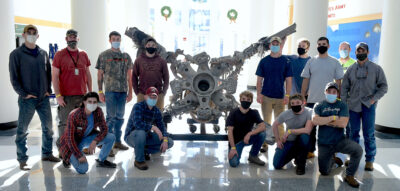
Students enrolled in a Welding course in FTCC’s Transition Tech program pose with the new base they created for the Battle of Mogadishu exhibit at the U.S. Army Airborne & Special Operations Museum in downtown Fayetteville. The base holds the damaged rotor from a Black Hawk helicopter. [Photo by Brad Losh]
Welding students from Fayetteville Technical Community College huddled together on the main floor of the U.S. Army Airborne & Special Operations Museum (ASOM) in downtown Fayetteville on a November morning. They surrounded a special exhibit, the damaged rotor of a Black Hawk helicopter shot down during the deadly Battle of Mogadishu in the African country of Somalia in 1993.
Some students steadied the dusty rotor as an engine hoist slowly lifted it from a deteriorating plywood base. Others kneeled on the floor. They carefully slid a new, steel base under the part. They used tools to adjust the movable mounts on the base, creating the perfect fit.
Minutes later, the hoist lowered the rotor onto the new base. The students stepped back to stand beside FTCC Welding Instructor Matthew Clark. They gazed in silence at the rotor – known by its call sign “Super 6-1,” – on its new base. Applause followed.
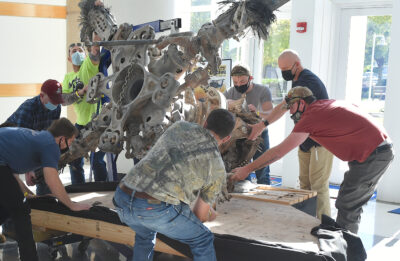
FTCC welding students and their instructor Matthew Clark, at far right, help steady the damaged rotor as its plywood base is removed, making way for a new steel base created by the class. [Photo by Brad Losh]
“It was a great feel of satisfaction, honestly,” Clark said. He served in the Army for 15 years as a welder. “It reminded me that what I am doing for the College, the community and those getting out of the Army is bigger than me, and all of us. I can say that the students really learned that, too.”
That moment was the culmination of work across two FTCC programs. The project involved 17 students and their instructors. Sixteen students are enrolled in Clark’s Structural/Pipe Welding course through College’s Transition Tech, a skills-training program for military service members preparing to transition to civilian life. Fourteen students are Army veterans and two are civilians, who enrolled using benefits from family members who are veterans. The automotive student who painted the base is also an Army veteran. Instructor Robbie Lynch oversaw his work for nearly a week at the Collision Repair & Refinishing Technology Center on Santa Fe Drive.
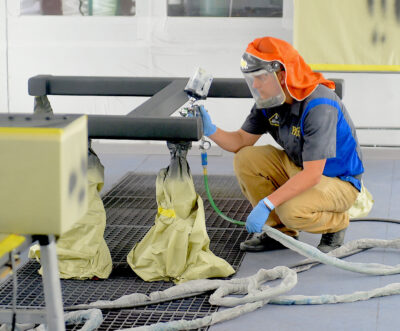
A student enrolled in FTCC’s Collision Repair & Refinishing Technology Program paints the base created to hold the damaged Black Hawk helicopter rotor that’s an exhibit at the ASOM in downtown Fayetteville. [Photo by Brad Losh]
The new base consists of mild carbon steel and four-by-four-inch tubing, and it measures around 58 inches wide and 108 inches long. The base was painted matte black in the collision center’s paint booth.
Among the museum staff watching the rotor’s final placement was Jim Bartlinski, ASOM’s museum director.
“Super 61’s is complicated by recognition that it is not only a resource of major historical significance; it is also a symbol to Soldiers and the American people of Task Force RANGER’s honored war dead,” he said in a statement. “As an Army museum, the ASOM has a significant responsibility in ensuring that this artifact will continue to bear witness for future generations to the selfless service and sacrifices made by those Special Operations Soldiers.”
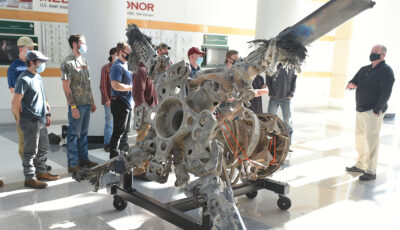
ASOM Museum Director Jim Bartlinski, at far right, thanks welding students at FTCC for creating a steel base for the damaged Black Hawk helicopter rotor that’s part of the museum’s “Battle of Mogadishu” exhibit. [Photo by Brad Losh]
History displayed, respectfully
The Battle of Mogadishu began 27 years ago on Oct. 3, 1993. At the time, American troops had been in Somalia for a few months, aiding the United Nations in a humanitarian mission. The country was embroiled in a constant struggle for power between warring local factions. In August, the US formed Task Force Ranger, a unit comprised of around 441 military personnel from across the armed forces and charged with capturing a warlord and two of his lieutenants. On Oct. 3, the task force was engaged in its seventh mission.
The mission was supposed to take less than an hour. It turned into a deadly firefight, lasting more than 14 hours.
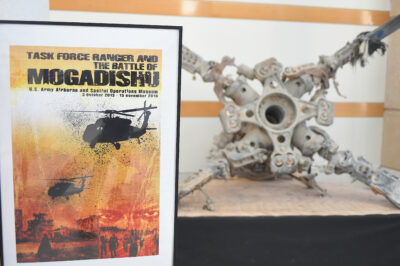
The damaged rotor from a Black Hawk helicopter shot down during the Battle of Mogadishu is shown here, resting on its original exhibit base inside the ASOM. [Photo by Brad Losh]
A crucial moment in the battle happened when enemy fire shot down Super 6-1, killing Army pilots Chief Warrant Officer 4 Clifton Wolcott and Chief Warrant Officer 3 Donovan Briley and injuring other soldiers on board. A second Black Hawk, “Super 6-4,” also crashed. The conflict wounded hundreds of Americans, Somalians, Malaysians and Pakistanis. The damaged rotor came to the ASOM in 2013, a year after Polaris Business Intelligence & Investigations (Pbi2) unearthed wreckage of Super 6-1 in a Somalian neighborhood. Bartlinski said the remains of Super 6-1 serve as a symbol to the soldiers and American people of “Task Force Ranger’s honored war dead.”
“The exhibit mount built by FTCC’s students ensures that this important and poignant historical artifact is displayed in a respectful manner, which pays proper tribute to the 18 Americans killed and 73 wounded during the battle,” Bartlinski said.
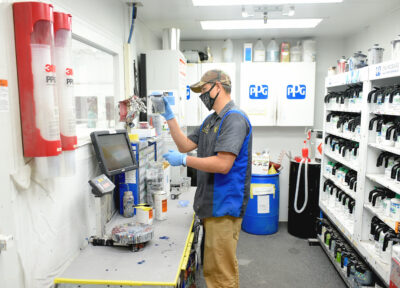
A student inspects a paint mixture before putting a coat on the new base created to hold the damaged Black Hawk helicopter rotor that’s part of an exhibit inside the ASOM. [Photo by Brad Losh]
Building the base also served as the first class project for the welding students. The assignment became a learning experience for his students. For some, it was their first time attempting a new skill. Building as a team helped the future welders decide the line of work they want to pursue in the profession, from pipeline to fabrication.
“With just one simple project, they can figure out where they want to go in their career, and that’s the biggest thing for these guys,” Clark noted. “That’s why I love class projects and do them with every class. It came with some frustration, but overall, it was an outstanding project for them.”
Clark, too, took something away from the project that wasn’t hands-on.
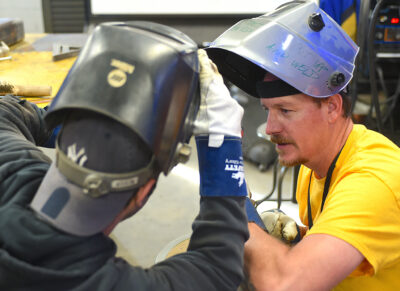
FTCC welding instructor Matthew Clark, right, talks with a student as they work together on a project. [Photo by Brad Losh]
“It brought back a lot of motivation,” he said. “It’s been five years since I’ve been out [of the Army] and dealing with a lot as a combat veteran, finding my purpose again. Something bigger than me, something bigger than us and I found that, now it’s time to move on to the next mission. It did a tremendous amount, feeling-wise, for me as well.”
FTCC became involved in the project at the request of ASOM Executive Director Renee Lane earlier this fall semester. The College offers many instructional programs in the trades and for military members and their dependents. B Company, 407th Brigade Support Battalion, 2nd Brigade Combat Team, 82nd Airborne Division at Fort Bragg donated materials for the project. U.S. Army Sgt. Anthony Morga serves with the unit, and is one of the students who helped build the new base under Clark’s supervision.
The ASOM plans to hold a ceremony commemorating the exhibit’s newest addition at a later date. The ceremony will follow social distancing guidelines due to the COVID-19 pandemic.
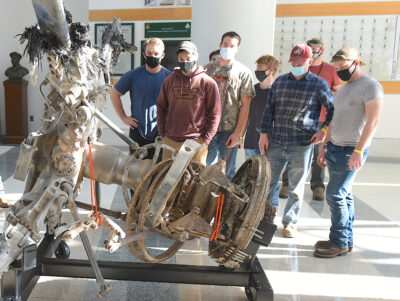
Students look at the final placement of the damaged Black Hawk helicopter rotor on the steel base they created for a class project during the 2020 Fall Semester. [Photo by Brad Losh]
Read the first story about this project titled “Project for FTCC welding students creates connection to Battle of Mogadishu” here.

